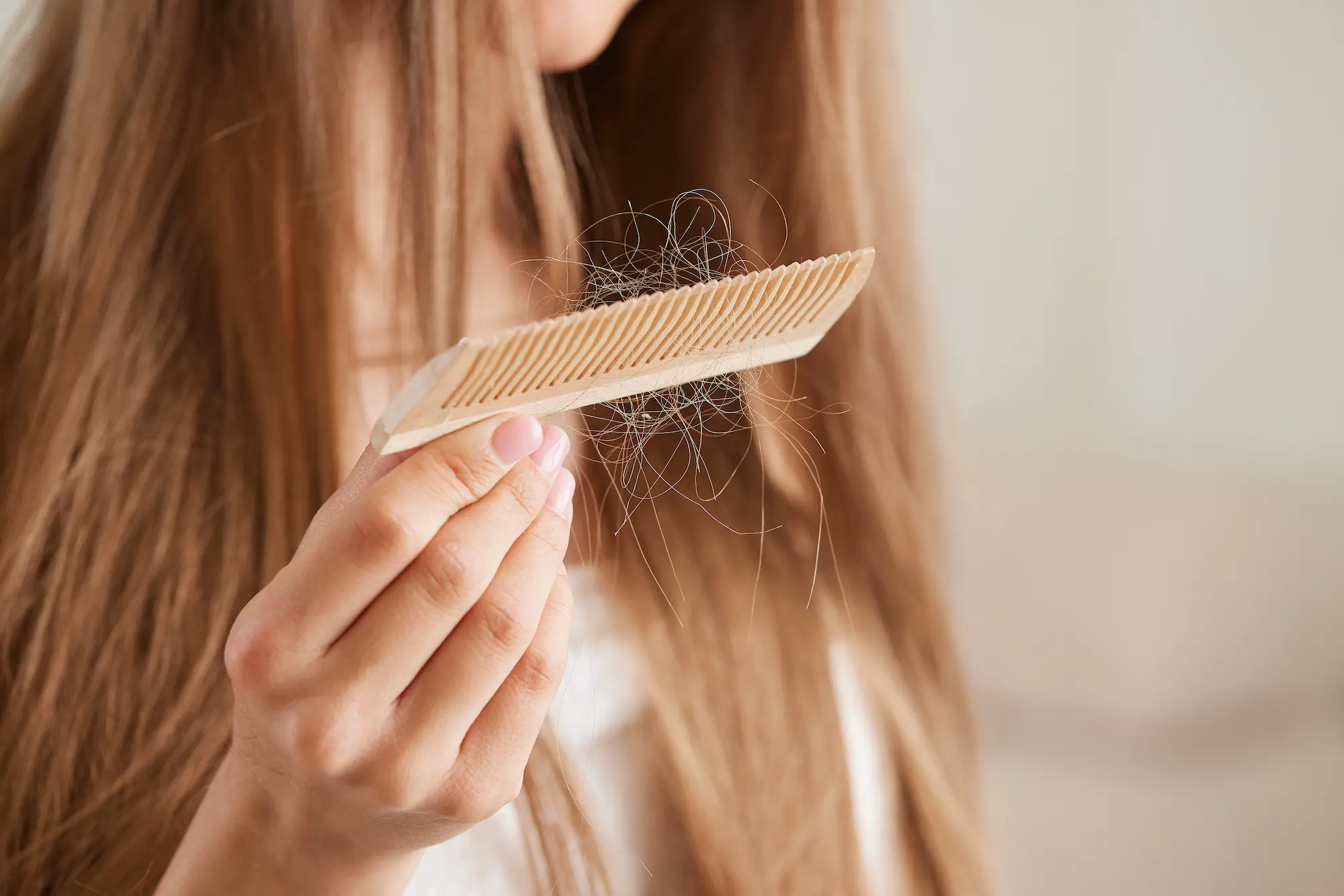
Hair thinning and baldness affect people of all races and ethnicities and are caused by inherited genes, among other factors. If your parents or grandparents experienced hair loss, you’re likely to have similar patterns. Multiple genes affect hair growth and loss by contributing to pattern baldness and regulating reactions to specific hormones. Here’s more information about how genes affect hair thinning and loss:
Genes Affecting Hair Growth and Loss
Many genes influence hair loss, including the androgen receptor genes 20p11 and FOXA2. The androgen receptor gene, also known as the AR or baldness gene, is responsible for male and female pattern baldness. Androgen receptors are proteins that allow cells to respond to male hormones or androgens, such as testosterone and dihydrotestosterone or DHT. Dihydrotestosterone is a more potent form of testosterone. The AR gene provides instructions for creating androgen receptors, which are found in hair follicles in the front, crown, and other areas of the scalp. AR gene variations can make your follicles more sensitive to DHT, causing the potent testosterone to bind to the genes.
Sensitivity to DHT triggers miniaturization and causes your hair follicles to shrink. Over time, the follicles become thinner and eventually die, resulting in baldness. Follicles on your crown and temples are usually more sensitive to DHT and can lead to pattern baldness, also known as androgenic alopecia. Other genes, such as 20p11, influence the production of prostaglandin D2 protein, which can inhibit hair growth. The FOXA2 gene regulates follicle development, and variations can lead to a reduced number of hair follicles and baldness. Another gene that influences hair growth is LSS. This gene increases the production of lanosterol, which promotes hair growth. Variations in the LSS gene can decrease lanosterol production, causing baldness.
Inheritance Patterns of Baldness
The extent to which your inherited genetics influence androgenetic alopecia varies due to mutations and environmental factors. Some genes don’t express themselves, while others mutate, resulting in unique patterns of baldness. Hair structure genes also influence the size, shape, and texture of your hair follicles. Mutations in these genes can result in various hair disorders, including baldness. Environmental, diet, and lifestyle factors also affect how the genes express themselves and mutate. Androgenic alopecia is usually inherited in a polygenic pattern involving multiple genes with unique effects on the trait. Stress and nutrition also affect how the hair is lost.
Some forms of baldness occur in a Mendelian pattern caused by mutations within a single gene. An example is alopecia areata, which occurs when your immune system attacks your hair follicles. The autoimmune disorder results in thinning across different areas of the scalp. Other hair loss patterns include frontal fibrosing alopecia and central centrifugal cicatricial alopecia. These patterns cause hair loss along the hairline and crown of the head. Genes also affect the age at which thinning begins and how much hair is lost.
Get Treatment for Hair Loss Today
Hair thinning and loss is a treatable condition, meaning you can slow the progression or restore full hair density. Restoration specialists use topical and oral medications, platelet-rich plasma injections, follicular unit transplants, and other treatments to treat genetic hair loss. Contact a hair restoration specialist today to schedule an appointment and learn more about their services.

Leave a Reply